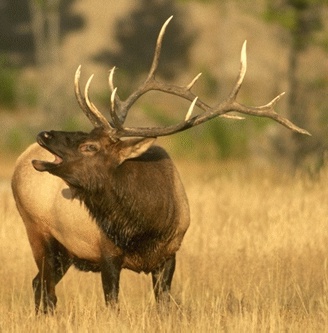
The old homesteader’s cabin on this place was originally built by Jacob Miller sometime around 1880. As a part of the “proving up” process under his homesteader’s deed, he was required to improve his 160 acres of land. In addition to the cabin, Jacob filed on two water rights, fenced his homestead and probably raised cattle and hay. I don’t know how long he lived here but he eventually sold to a member of the early Berry clan.
From what we have learned the original cabin was attached to a small barn. The barn is long gone but the cabin still stands on the banks of South Brush Creek. Other than occasional recreational use, I don’t think the cabin had any human inhabitants until we moved in full time in May of 2001. It was our most primitive home yet, all 270 square feet of it. Initially it lacked power and running water. We added a simple electric power source (actually an electric cord running under the door) in the fall of 2001 and a well in the summer of 2002 though water still has to be hauled in buckets as no actual plumbing exists in the cabin.
The cabin was our home for 2 ½ years while Don built our new small home. Once we moved into the house, the cabin became a workshop allowing Don the space and comfort to spend the next six years building bathroom and kitchen cabinets and all the trim necessary to turn our house into a home.
Then this fall the old cabin was pressed into a new service as we transformed its simple space into a place to ship the products from my brother-in-law’s company (Geomangear). Suddenly we were getting weekly UPS inventory shipments and sending out daily packages to customers around the world. Jacob Miller could not have imagined the future his little cabin would have. In fact I couldn’t have imagined it either. Our wonderful little cabin has sheltered us, provided a workspace and now gives us a place to make a living.
From Fleur Creek Farm




 I pride myself in my tomato and pepper production skills. I start several heirloom types in April and transplant the seedling to my little greenhouse in mid-May. In the past my plants have blossomed quickly, set fruits by the end of June and we are eating homegrown tomatoes and peppers by the end of July. We usually have enough to eat throughout the season and freeze for the winter. Not this year. In June, my little plants just sat there – no growth, no blossoms, no fruits. Finally in July they started up but it
I pride myself in my tomato and pepper production skills. I start several heirloom types in April and transplant the seedling to my little greenhouse in mid-May. In the past my plants have blossomed quickly, set fruits by the end of June and we are eating homegrown tomatoes and peppers by the end of July. We usually have enough to eat throughout the season and freeze for the winter. Not this year. In June, my little plants just sat there – no growth, no blossoms, no fruits. Finally in July they started up but it 

